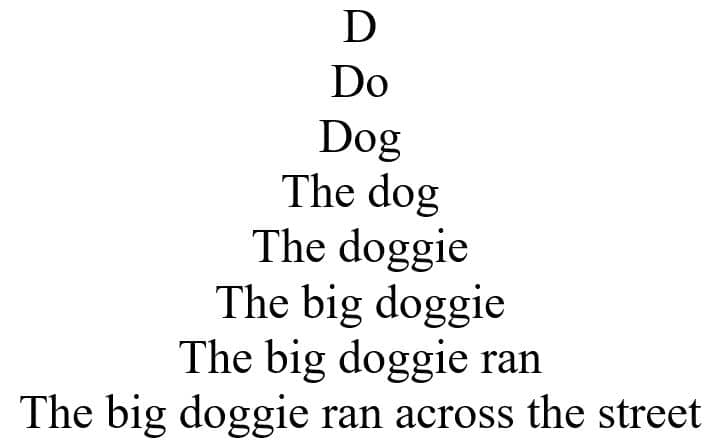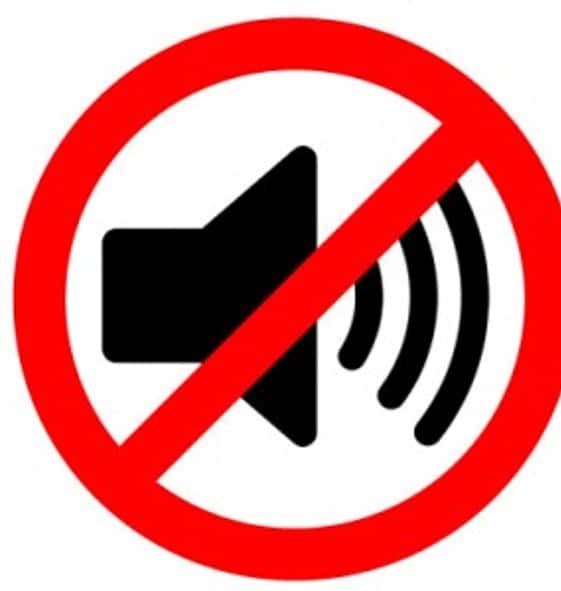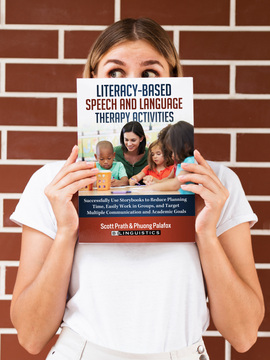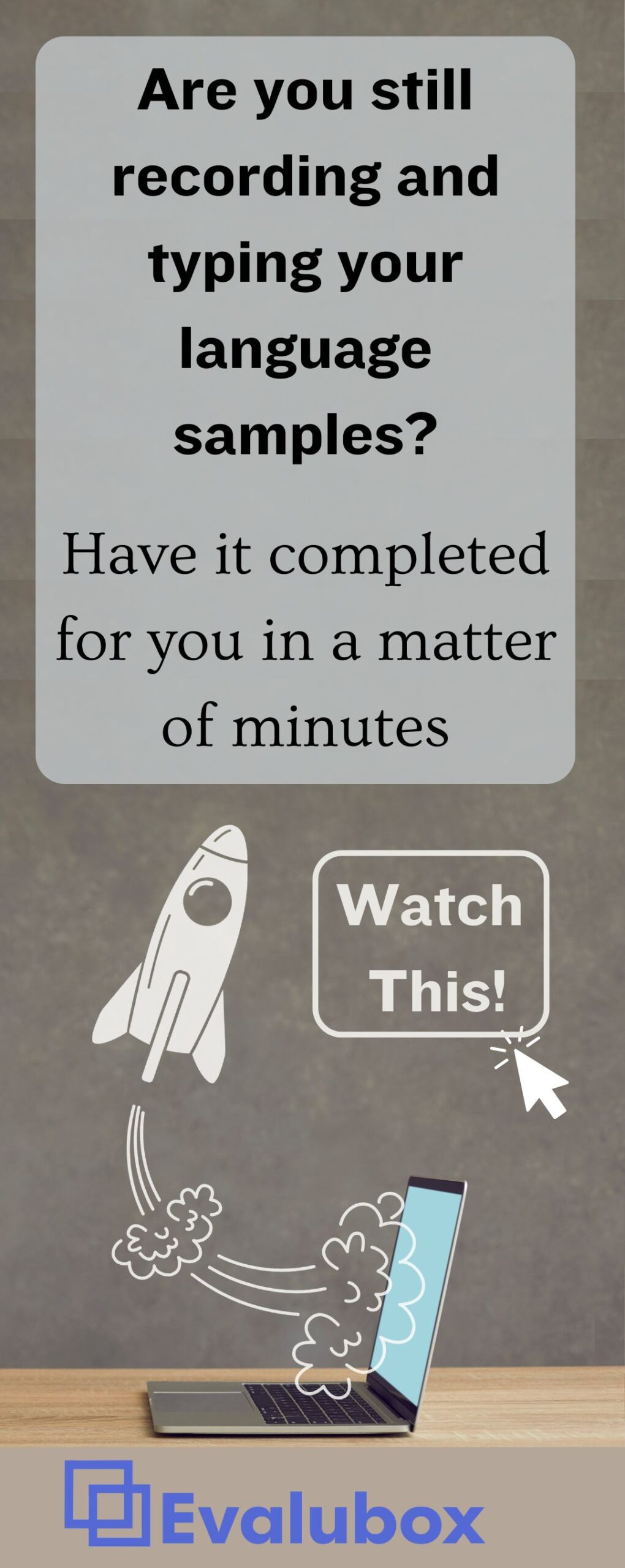Some research that I have uncovered and revisited lately has made me question how I have been planning my speech therapy for children with mixed receptive expressive language disorder. In looking into the specifics of receptive vs expressive language and building out a definitive list of Receptive Language Milestones, it became apparent that I have been treating children with just and expressive language disorder in pretty much the same way that I was treating children with a mixed receptive expressive language disorder.
Sure, I was adding in receptive language goals like WH-Questions and Following Directions but does this really make sense?
How can a child who has difficulty producing language content be the same as a child that has difficulty producing language and comprehending it?
They’re not.
Following this line of thinking, how can my therapy be the same?
It shouldn’t be.
Which circles us back to the perennial SLP question: What do we do in speech therapy to have the greatest impact? In this case, yes we want to provide some killer receptive language activities but a bigger piece of the puzzle is which order we do our therapy in.
When we have a receptive and expressive language disorder what do we do first? What do we focus on most? That is what this essay is about. We are going to start by talking about developmental milestones and what order receptive and expressive abilities come in. Then we are going to end by identifying 5 types of students that benefit wildly from a receptive language focus.

Receptive And Expressive Language – Which Happens First?
Receptive language happens first, right? It almost goes without saying. At six months of age, children are understanding words and demonstrating to us that they understand our communication. Their responses come in the form of silence, smiles, eye tracking, squeezing our finger, long before any expressive language like requesting. So we can say that it is very much the foundation for our expressive language.
Anecdotally this makes sense but all the research supports it too. Just a small number of SLPs do work in Early Childhood Intervention but if you dig into their tests like the MacArthur-Bates, Rossetti, or my favorite the DAYC-2, you will see progressive orders of milestones that lean heavily on receptive language at the young months before expressive language milestones start to join in.
So they’re so closely tied together, but then there’s this receptive piece that is the base for our expressive language.
Receptive Language Vs Expressive Language – Which to Focus on First

Let’s take an example from another area of our field. What is one of the first things we do when we are working with a child that is unintelligible? We look at their age. Then we look at what they’re not producing. And finally we write goals at the level just below where they are being successful.
Let’s say the child is 5 and not producing bilabials. We have no problem writing goals for the sounds that should come in at 3.
So on the expressive language side, especially with the little guys, we know we have this inverted pyramid where we talk about speaking at the word, then two-word, phrase level, and on up to sentences.
But what are we doing when a child has a mixed receptive expressive language disorder? Are you starting to see that based on all our experience and the order of acquisition of the standardized inventories, that receptive language should precede expressive?
The great news is that a focus on receptive language has been shown to translate to expressive language gains. So by increasing our focus on the receptive when we have a mixed receptive expressive language disorder, we get both the chicken and the egg.

Teacher and Parent Strategies for Receptive And Expressive Language
The image of the pyramid above is a print-off I keep in my IEP meeting folder. I use it to show parents and teachers where the child is successful and how we bump it up one level to get her to improve.
The same is true for our dynamic assessment. Let’s say a child could not repeat sentences of 8 words during formal testing. We try 6, then 5, then 4, then 3. When we have success we write this up as a “relative strength.” I also pull these protocols out during the parent and teacher meetings. I show them what the child should be doing and where they are at.
In this subtest Jackie was asked to repeat sentences of 4-10 words. She wasn’t able to do that but when we broke the sentences into 3-word segments she repeated everything perfectly. So at home, have her repeat 3 and maybe 4 words together, but not longer phrases.
5 Students with Mixed Receptive Expressive Language Disorder Who Benefit from a Receptive Focus
I’ve got a question here that came out of a SLP Impact Master Class and it’s a great one.
In the masterclass you were saying that expressive language gains can be made from receptive language therapy. That got me thinking that I should do receptive language activities more. But should we do this with all students? Who should we do it for?
Let’s talk about five kids where we have a lot of opportunity to make expressive language gains by focusing on some receptive language tasks. Let’s start with my favorite student, the student that talks too much.
1. Students that talk too much
We all have these students. They come into our speech rooms and they begin talking and really don’t stop! It’s just like a cloud of words kind of leaves them and surrounds your head.
What I think these kids have done is create a brilliant strategy where they say,
I can’t be exact, but I know if I launch a lot of these things called words out there and keep talking that the adult in front of me or the friend in front of me is going to start pulling stuff out and asking me questions to get me on point.
Many of these kids are successful at dodging improvement because we’re not typically worried about the very verbose kids. Well, when we’re doing therapy like barrier activities or silent therapy where no one is allowed to talk, they are forced out of their comfort zone and have to respond with one or two exact actions. This can set up a framework for a response that s just one or two exact phrases.
2. Students that don’t talk at all

I think the opposite is also true for the kids that don’t talk at all. So for those of us that work in the schools, we sometimes have large groups and there might be a child who doesn’t talk a lot. This might be reduced expressive language abilities. Maybe it is personality or discomfort being in a group.
You know these guys. These are the students that you put between the students that talk too much. These are often the ones we most look forward to picking up for our groups.
I have found that I’ve had a few of those kids absolutely shine when you turn down the expressive demands and you crank up the receptive demands. Sometimes these kids are just shy or auditory learners. They crush 10-step barrier activities or follow your directions to make a perfect paper airplane while the chatty ones have a ball of paper trash. It’s really nice to see their pride when someone is finally shining a light on their strengths.
3. Students with attention issues
Attention deficits often goes hand-in-hand with a severe receptive expressive language disorder. The long story short is that if we can reduce the stimulus of what’s coming in and show them what’s important, it allows them to focus.
There is a second benefit to focusing on receptive vs expressive language because receptive interventions tend to be more hands on. Your moving things, moving your body, cutting, glueing, assembling, etc. Children with attention deficit focus better when activities are kinesthetic.
4. Students with social pragmatic goals
We know that so much of the message that we convey is through facial expressions and body posture. Everything else we’re doing that doesn’t include the verbal message.
Well, if you remove the words, it allows the children with socio-pragmatic issues to focus on the only thing that they have there, which is the movements, body posture, and the smiling face. Speech pathologists do this well, especially with Autism, but it’s usually done in pictures: “What is he thinking?”

Receptive language is a way to make the focus on another person more active which means it has a better chance to be generalized to a true interaction.
5. Students who speak a second language
We know that our receptive vocabulary and our receptive knowledge is way larger than expressive knowledge. We also know with new language acquisition, whether it’s a monolingual young child learning their language or someone learning a second one, that they’re going to understand a lot more for a long while before able to use those words.
And, let’s not forget that they’re going to make some errors for quite a while. So if you can lop off that second half, which says, “you have to say this,” and you just deal with understanding and comprehension, you can access bilingual children without speaking that language.
Learn More:

Click the image for more information





I love reading your blogs, and I look forward to finding them in my email every week.
Two of the above links didn’t work for me: “The 6 Most Productive Receptive Language Activities” and “A New Approach for Receptive Language Strategies
Hi Troy,
So sorry! Those are two posts that are scheduled and will be published soon. I wrote a bunch on Receptive Language but wanted to spread them out and forgot I put the links in there. Glad you are subscribed and be on the look out for them soon. Scott
Hello,
I have a question about your opinion of the DAYC-2 Communication subtest. Is this a good choice for Spanish speakers and bilingual speakers? Do you find that it seems to be a reliable measure of language impairment for these populations, especially in a multidisciplinary team assessment setting? Thank you for your input.
Hi Lori,
The DAY-C-2 was not normed on Spanish speakers or bilingual speakers so I would not recommend using the norms if you are using this tool in your assessment process. You also need to consider that some of the things it tests, like contractions, are more common in English than in Spanish. Further, there are important linguistic elements in Spanish, like grammatical gender, that are not tested. My overall opinion is that you could use it to gather some qualitative information but you would need to be careful about the items that Spanish-speakers might be at a disadvantage on AND you would need to probe features of Spanish that aren’t represented on the test separately. Or, you could find a tool that aligns better with the population you are testing.
I know that there was a push by a group in Mexico that worked with Pro-Ed to produce and norm a Spanish version of the tool but to my knowledge, it was never published.
Good luck!